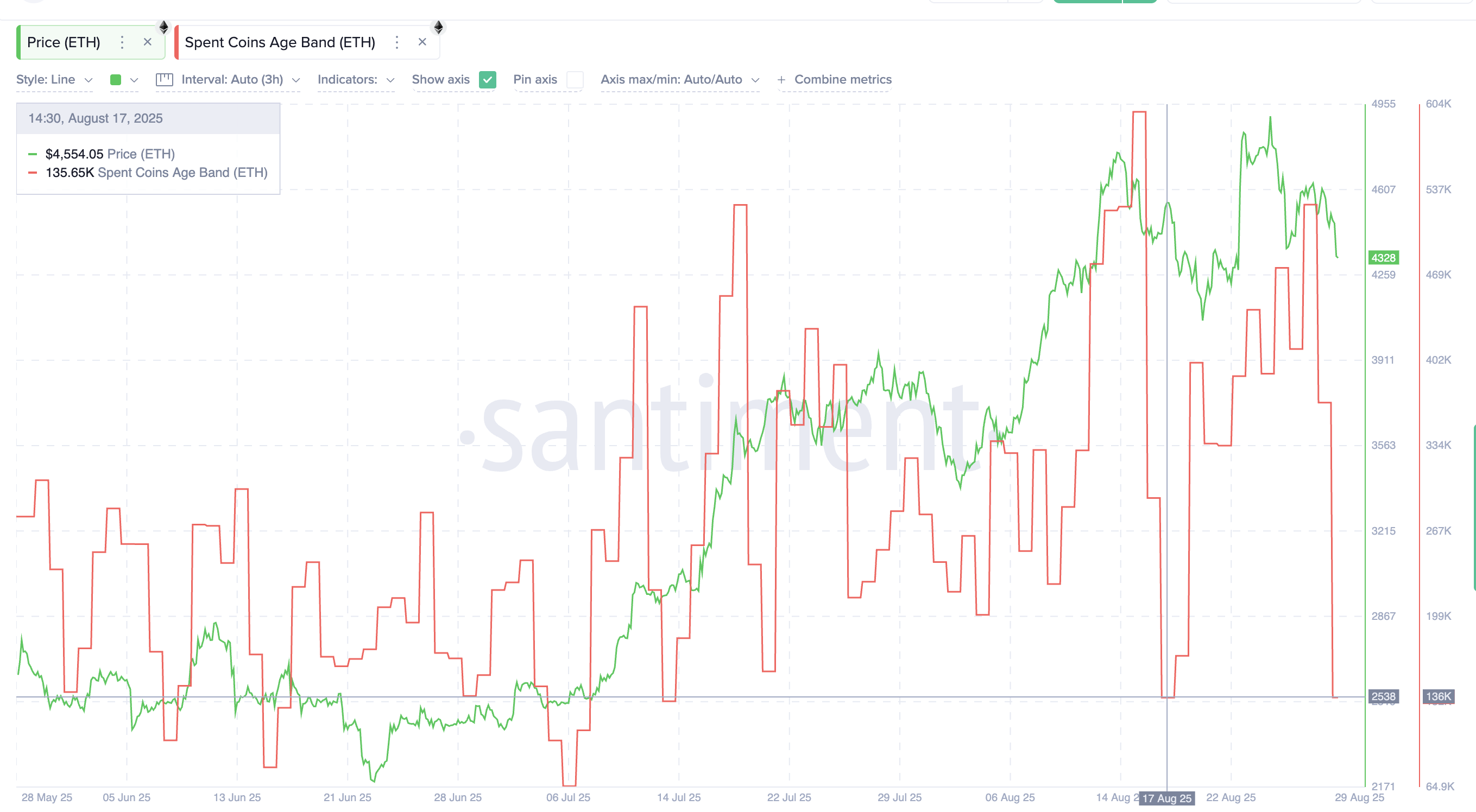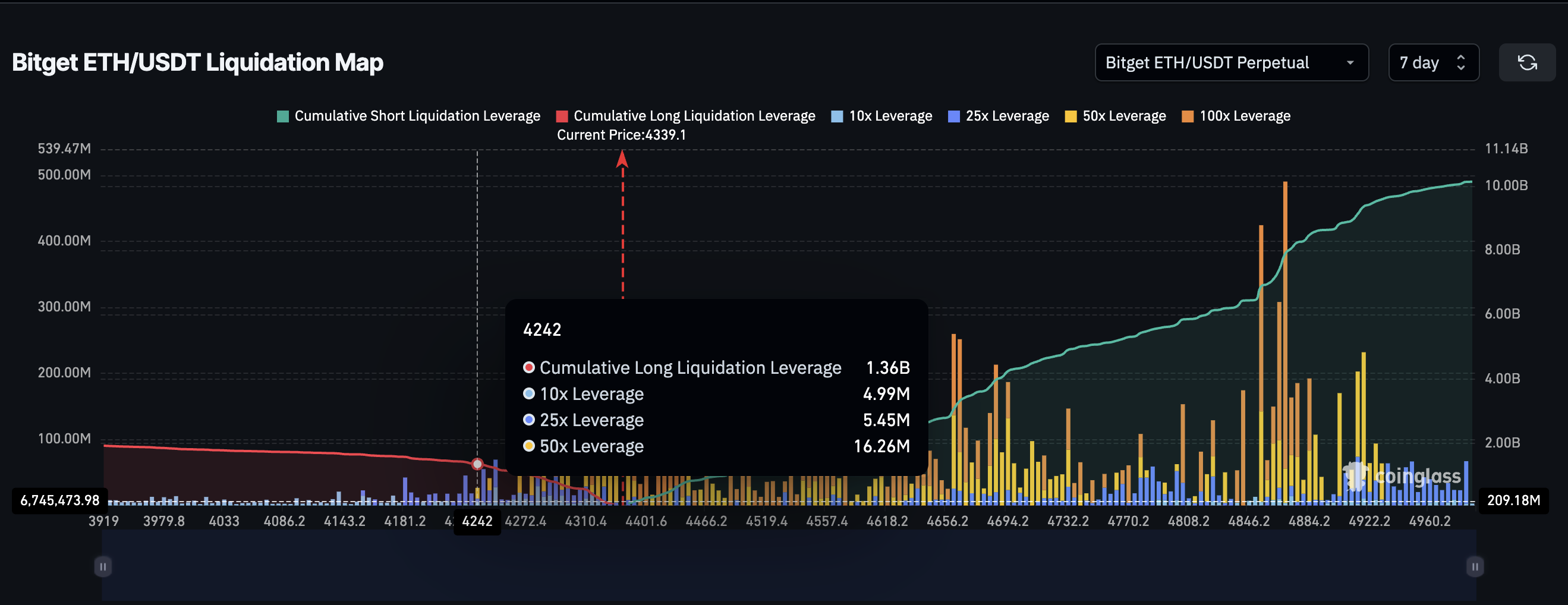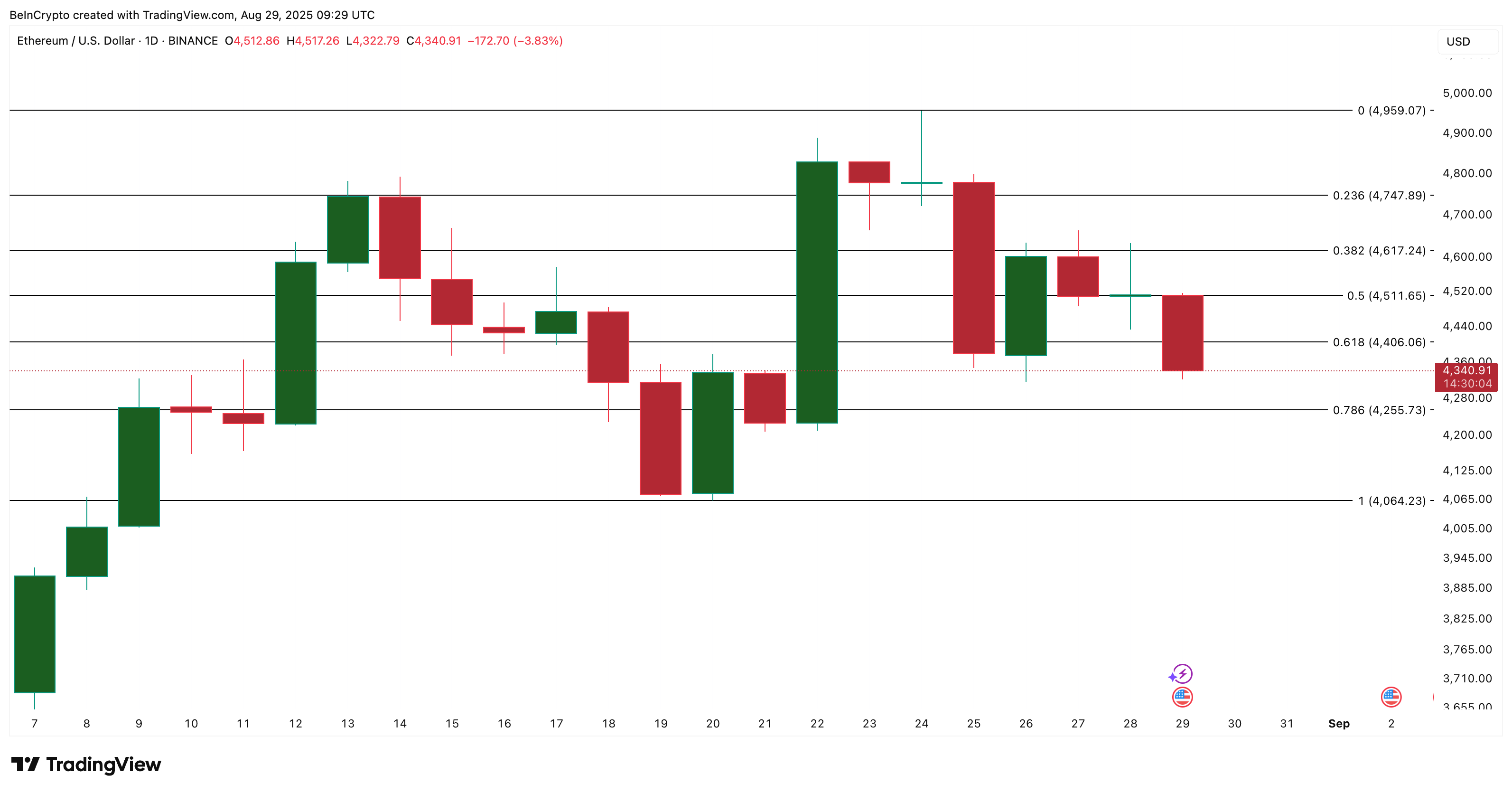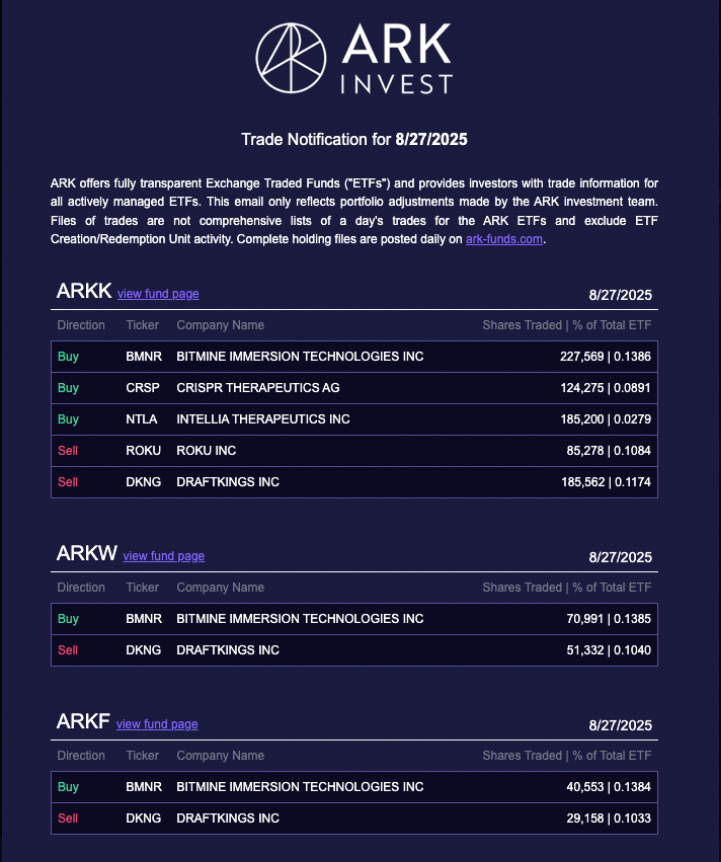Financial RSS Feeds
https://www.investing.com/rss/news.rss
https://cointelegraph.com/rss

Bitcoin dropped below $108,000 on Friday, and the rest of the crypto market followed. Will $100,000 be BTC's next stop?

Eliza Labs founder Shaw Walters said that xAI demanded more licensing fees from the agentic AI platform or face possible legal action.
https://www.coindesk.com/arc/outboundfeeds/rss/
XRP’s slow push into institutional finance just picked up another backer.
Data-focused blockchain firm Flare announced on Friday that Everything Blockchain Inc. (OTC: EBZT), a U.S.-listed company, has signed a memorandum of understanding to adopt its XRP finance (XRPFi) framework for corporate treasury yield.
The move comes months after Nasdaq-listed VivoPower International PLC (NASDAQ: VVPR) committed $100 million in XRP to Flare’s ecosystem, making EBZT only the second public company to do so.
The agreements mark early steps in Flare’s effort to turn XRP — historically a non-yielding asset — into a productive instrument for institutions.
At the center of the framework is Flare’s “FAssets” system, a trustless bridge that gives smart contract functionality to tokens like XRP and bitcoin. Combined with Firelight, Flare’s restaking layer, the setup lets companies convert XRP into FXRP and allocate it across decentralized lending, staking and liquidity protocols.
“XRP, now a roughly $150 billion asset, has been a cornerstone of digital finance for more than a decade, yet institutions have had few ways to make it productive,” said Hugo Philion, Flare’s co-founder and CEO.
“Flare changes that by enabling a compliant, on-chain, non-custodial yield framework designed for corporate treasuries. With VivoPower and now Everything Blockchain, public companies are validating that XRPFi is not just a concept but an emerging institutional standard,” he added.
EBZT framed its decision as part of a broader shift in how public companies treat blockchain assets.
“This is about unlocking the true financial utility of digital assets like XRP, not just as speculative holdings, but as yield-bearing instruments that can compound over time,” said Arthur Rozenberg, the company’s CEO. “Flare gives us the rails to do this in a way that meets the governance, security, and auditability standards required of public companies.”
For now, the XRPFi push remains small in dollar terms relative to bitcoin or ether-based treasury pilots.
But two listed companies publicly adopting the model in under a year gives XRP a new narrative: less about speculation, more about yield, and potentially a step toward more mainstream corporate balance sheets.
Stellar’s native token XLM came under heavy institutional selling pressure in the latest trading session, falling from $0.39 to $0.36 between August 28 at 3:00 p.m. and August 29 at 2:00 p.m. ET. Market data shows more than 41.89 million XLM changed hands, with volumes surging as large holders reduced exposure.
Despite the pressure, Stellar’s enterprise push remains intact. The Stellar Development Foundation reported the network is approaching 10 million registered accounts, boosted by daily growth of 5,000–6,000 new corporate wallets. Strategic partnerships with MoneyGram International and Circle Internet Financial continue to drive adoption of Stellar’s payment rails in cross-border finance.
Analysts highlighted sharp intraday swings on August 29, when XLM dropped 1.38% between 1:26 p.m. and 2:06 p.m., before institutional buyers reentered the market. The token recovered 1.27% during the 15-minute window that followed, closing the session at $0.361 after briefly touching $0.357.
A spokesperson close to Stellar’s corporate strategy stressed that the market turbulence was sentiment-driven rather than a reflection of business fundamentals. The late-session bounce suggested some large buyers viewed the decline as a buying opportunity, underscoring confidence in Stellar’s long-term role in blockchain-based financial infrastructure.

Technical Market Indicators Signal Mixed Corporate Sentiment
- XLM posted a 7.74% decline from $0.39 to $0.36 during the August 28-29 trading period.
- Daily trading range reached $0.031 between session high of $0.387 and low of $0.356.
- Peak selling activity occurred during morning European trading hours on August 29 with volume exceeding the 24-hour average of 41.89 million units.
- Technical resistance established near $0.373 level as institutional buyers remained cautious.
- Support levels identified at $0.375 and $0.362, with the lower threshold showing stability during final trading hours.
- Elevated trading volume during the decline indicates potential institutional accumulation strategies.
- Intraday price range of $0.005 during the final 60-minute trading period demonstrates continued market interest.
- Support at $0.357 attracted institutional buying interest before session close.
- Final hour recovery of 1.27% on volume exceeding 2 million units suggests corporate treasury departments may be accumulating positions.
Disclaimer: Parts of this article were generated with the assistance from AI tools and reviewed by our editorial team to ensure accuracy and adherence to our standards. For more information, see CoinDesk's full AI Policy.
https://cryptobriefing.com/feed/
The lawsuit's dismissal may bolster investor confidence in the company's Bitcoin strategy, despite past unrealized losses and market volatility.
The post Strategy investors dismiss lawsuit against the company over $6B Bitcoin unrealized loss appeared first on Crypto Briefing.
The film's release could spark renewed interest in Bitcoin's origins, influencing public perception and potentially impacting crypto markets.
The post New Bitcoin thriller ‘Killing Satoshi’ expected to drop in 2026; Oscar-winner Casey Affleck in the lead appeared first on Crypto Briefing.
https://bitcoinist.com/feed/
Solana’s Rust validator client Agave has matched Firedancer’s lab record, briefly peaking at 1.1 million transactions per second in a synthetic, single-node benchmark. The result was disclosed by Solana core engineer Andrew Fitzgerald, who wrote: “Hit a burst of 1.1m TPS on agave this morning. Single-node synthetic test with simple transfers. On a branch with several changes not yet merged,” before listing PoH recording and status-cache improvements alongside new “scheduler-bindings,” with block/shred limits disabled for the run.
Pressed on caveats, Fitzgerald added a plain-English qualifier: “disabled block/shred limits, and it’s a burst not sustained. have several long-term perf improvements squashed on top of scheduler-bindings to make this happen.” The exchange underscored that this is a laboratory datapoint, not a network-wide throughput number.
Solana’s Core Client Smashes 1.1M TPS
The milestone immediately fed a broader narrative about client-level competition on Solana. Helius co-founder Mert Mumtaz framed it this way: “last year Firedancer hit 1.1M TPS on a synthetic test — now, Agave has done the same. There is an outdated notion that Solana will become faster only if Firedancer. This is from a time when Agave wasn’t as competitive — but it is now. The competition between the two client teams will improve the chain like never before.”
Anatoly Yakovenko, Solana’s co-founder, poked fun at the victory lap, quipping: “Pls no more. Just ship ag and lower the timers to 150ms.” The remark tracks with the network’s ongoing push to reduce consensus latencies. That push is currently crystallized in SIMD-0326 (“Alpenglow”), a consensus overhaul now in community voting that targets ~150 ms block finality by reworking how and where validator votes occur.
Under the hood, the Agave test hints at where performance headroom is being unlocked. “Scheduler-bindings” — a forthcoming extension that lets validators plug in custom block-packing logic without forking core — has been on Anza’s public roadmap since May. Recent Agave 2.3 literature also details a revamped TPU client (“tpu-client-next”), AccountsDB I/O reductions, a greedy scheduler, and snapshot/gossip improvements, all of which cut real-world overhead even if they don’t show up in synthetic peaks one-for-one.
The obvious question is what the 1.1M TPS burst actually means for users. Synthetic single-node tests measure raw execution and scheduling throughput with some guardrails temporarily lifted; they do not translate linearly to mainnet capacity, which is bounded by network propagation, signature verification, scheduler policy, and economic constraints. Still, the number is directionally consistent with the network’s trajectory. Earlier this month, independent experiments observed six-figure TPS bursts on mainnet under heavy program-call load — a separate datapoint that, taken together with Agave’s lab figure, reinforces the pace of optimization across both client and protocol layers.
Two broader takeaways stand out. First, Solana’s client diversity is no longer hypothetical: Agave (Anza) and Firedancer (Jump Crypto) are now trading blows on the same synthetic leaderboard, with different codebases stressing different parts of the system — a healthy sign for resilience and future performance. Second, the product focus has shifted from trophy numbers to latency and predictability: the 150 ms target, if adopted, compresses user-perceived finality in ways that matter for payments, trading, and real-time apps even when headline TPS fluctuates.
At press time, SOL traded at $207.86.

Ripple Swell 2025 is fast approaching, even as members of the XRP community look forward to the bullish announcements that could come at the conference. The crypto firm also unveiled featured speakers at the event, including its executives Brad Garlinghouse and Chris Larsen.
Details About The Ripple Swell 2025
Ripple has announced that the Swell event will take place in New York from November 4 to 5. Featured speakers include Ripple CEO Brad Garlinghouse, Co-founder Chris Larsen, President Monica Long, Nasdaq’s Chair Adena Friedman, and renowned chef José Andrés. Executives from BlackRock, Fidelity, Bitwise, Citi, CME Group, and Franklin Templeton are also set to speak at the event.
The Ripple Swell event will cover several topics that touch on the firm’s customers, team members, and industry thought leaders, as well as how financial institutions and businesses are leveraging cryptocurrency and blockchain technology. These topics will include tokenization, payments, regional regulatory process, and crypto financial services.
These are all topics that Ripple, as a firm, is conversant with, given its operations. The company has secured several partnerships this year to promote tokenization on the XRP Ledger (XRPL), including one with Ondo Finance to launch its tokenized treasuries on the network. Meanwhile, Ripple is known for its payment service, which is why the discussion around payments could be very insightful.
It is worth noting that the crypto firm is expected to finalize its deal to acquire the stablecoin platform Rail around the time of the Swell event. As such, this could be one of the major talking points during the event. Ripple earlier highlighted why the Rail acquisition was strategic, as it would enable the company to offer virtual accounts and automated back-office infrastructure.
Meanwhile, Ripple has had its fair share of dealing with regulators, particularly in light of the XRP lawsuit. As such, the regulatory topic at the Swell event is expected to garner significant attention, as the company’s executives discuss how they have navigated the regulatory landscape. Notably, the company’s Chief Legal Officer (CLO), Stuart Alderoty, is also one of the featured speakers.
XRP Community Reacts To Latest Swell Announcement
In an X post, Ripple revealed that Chris Larsen and José Andrés will be the Keynote speakers at the event. XRP community members such as BankXRP shared their delight at the fact that Larsen will be speaking at the event. BankXRP noted that it has been a while since the Ripple co-founder has made an appearance.
On the other hand, community members have questioned why Chef Andrés is speaking at the event and as a keynote speaker. Ripple didn’t reveal what the renowned chef will be speaking on. However, it could relate to the adoption of cryptocurrency in businesses or his humanitarian work, which is a significant development for the firm, considering its philanthropic efforts.
At the time of writing, the XRP price is trading at around $2.90, down over 3% in the last 24 hours, according to data from CoinMarketCap.
https://cryptoslate.com/feed/
Bitwise Chief Investment Officer Matt Hougan said Solana could soon set new all-time highs, mirroring Bitcoin and Ethereum’s record runs earlier this year.
Hougan argued that SOL is set to benefit from the same forces that propelled BTC and ETH to new highs this cycle, namely exchange-traded fund (ETF) inflows, large capital firms entering the market, and simple, compelling narratives that resonate with investors.
He wrote in a social media post:
“The formula is simple: ETF fund flows + fund companies + a simple story = all-time highs. It applies to Bitcoin, it applies to Ethereum, it applies to Solana.”
Path to institutional adoption
Solana, a blockchain known for its high-speed processing and low transaction costs, has seen increasing developer activity across payments, gaming, and consumer-facing applications.
The network’s efficiency has helped position it as a potential alternative to Ethereum for decentralized applications, fueling speculation about the eventual approval of a spot Solana ETF in the US.
So far, Bitcoin and Ethereum ETFs have funneled billions of dollars into the market, with Bitcoin funds alone surpassing gold ETFs in daily volumes this summer.
Given its growing market capitalization and expanding ecosystem, many view Solana as the next logical step for institutional product offerings.
Hougan’s comments add weight to that view, suggesting that once fund vehicles are established, Solana could follow the same trajectory as its larger peers.
Outlook evolving
Bitwise has taken a long-term bullish stance on Solana, projecting in a detailed January report that the token could reach between $2,300 and $6,600 by 2030, depending on adoption scenarios. The firm based its estimates on Metcalfe’s Law, linking network growth to valuation.
To support investor access, Bitwise also launched a Solana Staking ETP in Europe, offering exposure to SOL with integrated staking rewards and signaling confidence in the blockchain’s scalability and growing ecosystem. It is also looking to launch a spot Solana ETF in the US, but the SEC has so far delayed its decision on the applications.
While the firm remains optimistic about Solana’s long-term role alongside Bitcoin and Ethereum, it has been more cautious on near-term price outlooks until now. Bitwise previously said it was unsure if SOL would reach new highs this year and called Bitcoin the “best horse in the race.”
This mix of ambitious long-range forecasts and tempered short-term expectations reflects Bitwise’s view of Solana as a high-potential but still maturing asset.
The post Bitwise says Solana next to hit fresh highs as institutional adoption wave matures appeared first on CryptoSlate.
Bitcoin (BTC) holding patterns suggest a potential resumption of the uptrend starting in late September 2025, as long-term accumulation data reveals evolving market dynamics driven by institutional adoption and policy catalysts.
CryptoQuant Korean Community Manager Crypto Dan’s analysis reveals that the current cycle differs from previous bull markets due to extended timeframes and flattening momentum slopes.
The percentage of Bitcoin held for over one year based on realized market cap demonstrates the current cycle’s unique characteristics compared to previous phases.
Unlike past cycles, where sharp surges led to rapid peaks, institutional adoption through spot exchange-traded funds (ETFs) and nation-state purchases has extended the bull market’s duration while gradually flattening the uptrend’s slope.
Market momentum faces periodic stalls when capital flows shift toward altcoins, a pattern that has repeated multiple times during the current cycle. It contrasts with 2023-2024, when Bitcoin dominated market attention before capital began migrating to alternative cryptocurrencies.
Favorable backdrop
Crypto Dan noted that September rate cut expectations align with Bitcoin’s seasonal patterns and technical indicators.
Polymarket traders currently place 81% odds on a 25 basis point Federal Reserve rate cut at the September FOMC meeting, providing a potential catalyst for risk asset appreciation.
The analysis also anticipates additional momentum from the expected approvals of altcoin ETFs in October.
Bloomberg ETF analyst James Seyffart stated in April that most crypto ETF applications face final deadlines in October, making it the likely approval month for spot altcoin products.
This timeline creates a favorable policy window for crypto markets as they enter the fall season.
Combined with seasonal patterns that show Bitcoin’s strength in autumn months, the convergence of dovish monetary policy and regulatory clarity positions the market for renewed upward momentum following the current consolidation phase.
Extended cycle characteristics
Institutional adoption fundamentally altered Bitcoin’s cycle dynamics compared to the retail-driven phases that preceded it.
The introduction of spot ETFs and corporate treasury adoption created more stable demand flows but extended the cycle’s duration. The analysis suggested these structural changes support sustained bull market conditions despite periodic consolidation phases.
Given the favorable policy backdrop and development of institutional infrastructure, any additional corrections during the transition period could present attractive opportunities for accumulation.
The combination of rate cuts, ETF approvals, and seasonal factors supports an optimistic market outlook for fall and winter 2025.
The post Bitcoin signals uptrend resumption in late September based on holding patterns appeared first on CryptoSlate.
https://ambcrypto.com/feed/
 Bitcoin faces short-term selling pressure but long-term scarcity metrics still back a bullish case.
Bitcoin faces short-term selling pressure but long-term scarcity metrics still back a bullish case. Solana’s early presale buyers saw life-changing gains when the token delivered returns of over 1000x […]
Solana’s early presale buyers saw life-changing gains when the token delivered returns of over 1000x […]https://beincrypto.com/feed/
Ethereum price is down by more than 5% today, trading around $4,300. This marks one of its sharpest daily drops in weeks. Yet, monthly gains remain intact at more than 13%, showing that the broader uptrend is not broken.
The question now is whether today’s fall is just noise or the start of something deeper. On-chain and technical signals suggest the dip may not last long, with profit booking easing and whales stepping in.
Profit Taking Eases As Whales Add $1 Billion ETH
The Spent Coins Age Band, which tracks when long-held coins are sold, has dropped to a month-low of about 135,000 ETH. This means that long-term holders are selling less — profit-taking has eased sharply compared to earlier in August, when the metric was above 525,000 ETH. That’s a 74% drop.

History shows that when this metric bottoms out, Ethereum often bounces. For example:
- On July 7, spent coins fell to 64,900 ETH, and the Ethereum price rallied from about $2,530 to $3,862 — a 52% jump.
- On August 17, the same pattern led to a 20% move, as ETH climbed from $4,074 to $4,888.
Now, the latest drop back to local lows may again suggest that the wave of selling is waning.
For token TA and market updates: Want more token insights like this? Sign up for Editor Harsh Notariya’s Daily Crypto Newsletter here.
Additionally, whales have been quietly buying the dip. Addresses holding over 10,000 ETH have increased their stash from 95.76 million ETH on August 27 to about 96 million ETH now.

At current prices, that means whales added roughly $1 billion worth of ETH in just two days. Together, easing profit booking and fresh whale accumulation give Ethereum a base for the next leg higher.
Ethereum Price Action and Liquidation Map Align At Key Levels
Beyond on-chain signals, the charts also align with the uptrend view. On the Bitget liquidation heat map, short position stacking starts at $4,400, which makes the level a critical pivot.
If ETH manages a daily candle close above $4,406, it could trigger liquidations of those shorts, forcing traders to buy back and pushing the Ethereum price higher.
Liquidation mapping shows where traders have placed heavy leverage positions (longs and shorts) and at what price levels liquidations would occur.

On the downside, immediate support sits around $4,255, which aligns with the $4,242 level on the liquidation map. This is the level where the most leveraged long positions get liquidated.
Therefore, if the Ethereum price manages to hold at $4,255, a dip reversal might be likely as leveraged downside risk weakens.
If the ETH price breaks below that, the next key level is $4,064. A dip under this level would likely flip the trend bearish in the short term.

The alignment between liquidation clusters and price chart levels adds credibility to these zones. It means traders are all watching the same numbers, making the reaction at these points even stronger.
For now, the path is clear: hold above $4,255 and reclaim $4,406, and the case for a reversal strengthens. Fail at those levels, and the Ethereum price risks extending its dip.
The post Ethereum Dip May Be Temporary with $1 Billion Whale Buys and Slower Profit Taking appeared first on BeInCrypto.
The Upcoming Hollywood thriller “Killing Satoshi” will explore one of the most significant mysteries in modern finance: Satoshi Nakamoto’s true identity.
The film will be a conspiracy thriller following a group of individuals who challenge a powerful global network intent on keeping Nakamoto’s identity a secret.
Hollywood Tackles the Crypto World
Hollywood is making a thriller about Bitcoin’s creator, Satoshi Nakamoto, turning one of crypto’s biggest question marks into a movie. The “Killing Satoshi” project will begin production in London in October and is scheduled for a 2026 release.
According to available information, the plot will follow the story of a group of individuals who challenge a powerful network of governments, financial entities, and tech companies.
This powerful network aims to keep Satoshi Nakamoto’s identity a secret. The conflict focuses on Nakamoto’s one million Bitcoin stockpile, driving the story’s geopolitical and espionage plot home.
The film’s producers, including Ryan Kavanaugh, have compared its approach to that of “The Social Network,” aiming to explore the real-world impact of a revolutionary technological innovation.
The movie is directed by Doug Liman, known for his work on thrillers like “The Bourne Identity.” “Gran Torino” screenwriter Nick Schenk wrote the screenplay.
The cast features Casey Affleck and Pete Davidson in the lead roles, though details about their specific characters remain unknown.
A $120 Billion Mystery
Arkham intelligence analysts have conducted extensive research to identify the wallets believed to belong to Satoshi Nakamoto.
Through on-chain analysis, they have attributed many addresses to Bitcoin’s creator based on a unique mining signature known as the “Patoshi Pattern.”
Based on this research, Nakamoto mined roughly 1.1 million Bitcoin in the network’s earliest days. With Bitcoin’s current market value, the fortune is worth over $120 billion.
The untouched status of these coins is a key part of the mystery. This long-term inactivity has led many in the crypto community to treat them as “dead” or lost.
There’s widespread speculation that the private keys remain lost or Nakamoto intentionally destroyed them.
If so, this would prevent anyone from wielding such immense power over the network. The vast fortune’s untouched status is central to the “Killing Satoshi” plot.
The post Everything We Know So Far About the Bitcoin Thriller “Killing Satoshi” appeared first on BeInCrypto.
https://cryptonewsz.com/feed/
https://www.newsbtc.com/feed/
BitMine Immersion Technologies saw its stock sink nearly 8% this week, yet that didn’t stop Cathie Wood’s ARK Invest from pouring another $15.6 million into the company.
The latest move comes during a period of heightened volatility in both equities and crypto markets.
ARK Expands Its Holdings
According to ARK’s trading disclosures on August 27, the firm bought 339,113 BitMine shares spread across three ETFs.
The ARK Innovation ETF acquired 227,569 shares valued at a little over $10 million, while the Next Generation Internet ETF added 70,991 shares worth $3.27 million.
The Fintech Innovation ETF purchased another 40,553 shares for $1.87 million. Despite this fresh round of buying, BitMine shares ended the day at $46 before sliding 7.80% in extended trading.
Cathie Wood and Ark Invest bought 339,113 shares of Tom Lee’s $BMNR today pic.twitter.com/G9SQY02rDg
— Tom Lee Tracker (@TomLeeTracker) August 28, 2025

Ethereum Strategy Draws Institutional Attention
BitMine’s pivot from Bitcoin mining to an Ethereum-focused treasury earlier this summer has transformed the firm into a major corporate player in crypto.
Its balance sheet now holds 1,714,000 ETH, worth about $8.20 billion, alongside 192 Bitcoin and $562 million in cash.
That makes BitMine the world’s largest corporate holder of Ethereum. Billionaire investor Peter Thiel has also taken a 9% stake, adding more weight to the firm’s rapid rise.
According to latest data, the company’s strategy has fueled sharp price movements in its stock. After surging more than 3,000% to a record high of $135 in early July, shares remain up more than 400% year-to-date despite recent pullbacks.
Reports have disclosed that BitMine dramatically expanded its fundraising plans. On August 12, the company filed to boost its at-the-market equity offering from $2 billion to $24.5 billion, a move led by Cantor Fitzgerald and ThinkEquity.
Observers say the new funds will give BitMine more firepower to build its Ethereum position. Analysts projected strong gains for Ethereum, predicting $5,500 in the near term and as high as $12,000 by year-end.
If those targets materialize and BitMine pushes toward its 5% supply goal, the company could one day rival Michael Saylor’s Strategy in scale.
A New Corporate Champion For Ethereum?Social media reaction has been quick to frame BitMine as Ethereum’s version of Strategy — a corporate vehicle for institutional exposure to the asset.
ARK’s growing position, surpassing $200 million this summer, only strengthens that concept. Yet the risks are just as visible.
BitMine’s share price swings highlight how concentrated bets can move violently, even with billions of dollars on the balance sheet.
Featured image from Meta, chart from TradingView
Ethereum is staring down one of its most significant supply risks as more than 1 million ETH, valued at $5 billion, lines up for withdrawal from staking. The unprecedented exit queue has ignited debate over whether the network could face a wave of selling pressure or if the movement marks a rotation of capital within the Ethereum ecosystem.
Ethereum Sees Record Validator Exodus
Ethereum faces what analysts describe as the largest validator exit events in its Proof of Stake (PoS) history. Blockchain data from ValidatorQueue shows more than 1 million Ether, worth roughly $5 billion, awaiting withdrawal. Notably, validators, who play a central role in securing the network by adding new blocks and verifying transactions, have lined up to withdraw their tokens. This surge in exits has pushed the waiting period to a record of 18 days, as of writing.
Etherscan also reports that on August 20, Ethereum’s validator exit queue surged past 916,000 ETH, the highest level in over a year. That figure ballooned to more than 1 million in less than two weeks, highlighting the rapid acceleration of withdrawals. At the same time, however, Ethereum’s entry queue also expanded—rising from just 150,000 ETH to over 580,000 ETH—creating a net staking increase of about 200,000 ETH in the past week.

The timing of this upcoming withdrawal coincides with Ethereum’s significant price growth, which has seen the cryptocurrency gain more than 72% over the past few months. A substantial share of this pending Ether could be sold as stakers lock in profit after a rally. Moreover, if a large fraction of the $5 billion supply is unloaded on the open market, ETH could experience a sharp wave of sell pressure.
However, while headline figures appear alarming, analysts caution against assuming that all withdrawn Ether will be dumped. Crypto market expert Joe Swanson notes that institutional buyers and Ethereum ETFs have been absorbing substantial amounts of ETH, thereby cushioning the potential downside. He argues that although the exit queue suggests short-term turbulence, the cryptocurrency’s long-term trajectory remains bullish, with projections still targeting levels above $5,000.
Exits Signal ETH Market Rotation, Not Abandonment
ValidatorQueue’s data highlights that while the exit queue surpasses 1 million, the entry queue sits above 726,000. This implies a net staking outflow of over 320,000 ETH, indicating a possible rotation of capital rather than wholesale abandonment.
Supporting this, crypto expert Minal Thukral stressed on X that the spike in the ETH validator queue should not be misinterpreted as a crisis. Thukral noted that Ethereum’s protocol is designed to intentionally rate-limit exits to ensure network stability, meaning congestion may not be the issue.
According to the analyst, validator exits are better understood as capital rotations. He explained that large stakers are likely reallocating funds into liquid staking services, restating, or adjusting positions in anticipation of ETFs. At the same time, demand to enter the staking queue remains strong. This interplay between exits and entries paints a picture of a maturing market, with the real question being where the withdrawn ETH will flow next.
 pic.twitter.com/1BP6yLfBJp
pic.twitter.com/1BP6yLfBJp

































